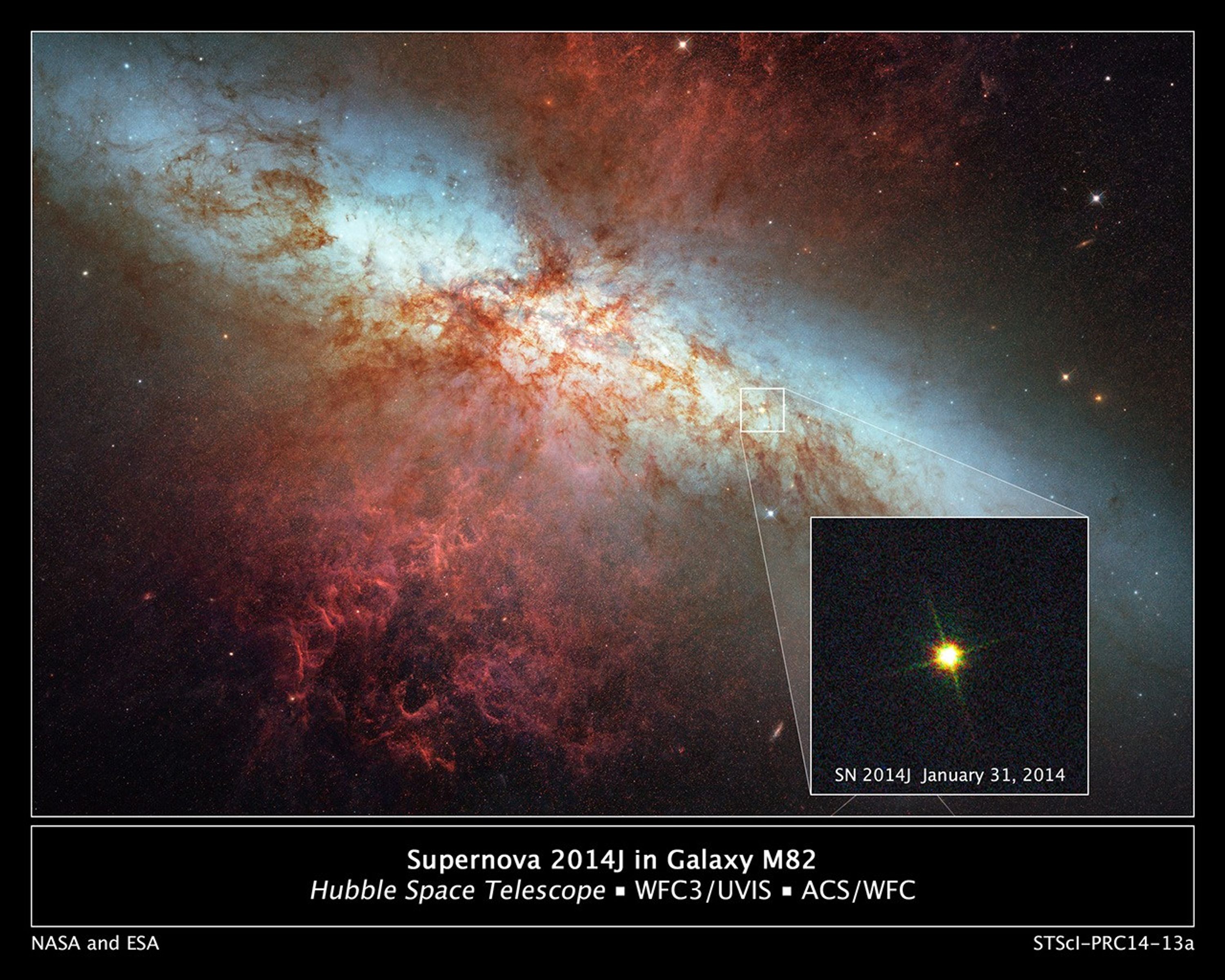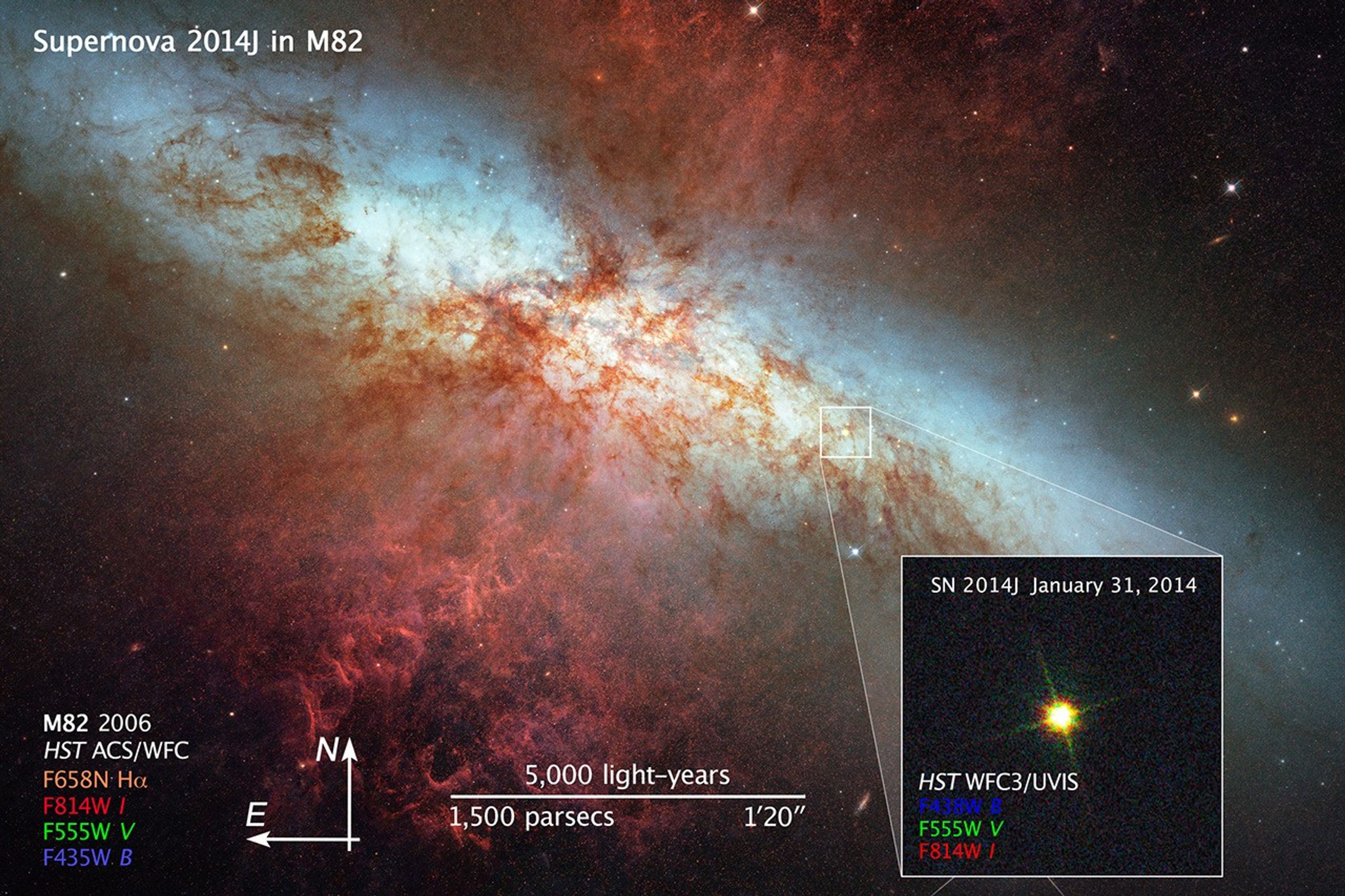1 min read
M82 Hubble Mosaic with 2014 Supernova

About the Object
- R.A. PositionR.A. PositionRight ascension – analogous to longitude – is one component of an object's position.09h 55m 52.72s
- Dec. PositionDec. PositionDeclination – analogous to latitude – is one component of an object's position.69° 40' 45.76"
- ConstellationConstellationOne of 88 recognized regions of the celestial sphere in which the object appears.Ursa Major
- DistanceDistanceThe physical distance from Earth to the astronomical object. Distances within our solar system are usually measured in Astronomical Units (AU). Distances between stars are usually measured in light-years. Interstellar distances can also be measured in parsecs.11.5 million light-years (3.5 million parsecs)
About the Data
- Data DescriptionData DescriptionProposal: A description of the observations, their scientific justification, and the links to the data available in the science archive.
Science Team: The astronomers who planned the observations and analyzed the data. "PI" refers to the Principal Investigator.The pre-supernova data are from Hubble proposal 10776: M. Mountain (STScI), J. Gallagher (University of Wisconsin-Madison), P. Puxley (Gemini Observatory), and the Hubble Heritage Team: K. Noll (NASA/GSFC), C. Christian, L. Frattare, F. Hamilton, Z. Levay, M. Mutchler, W. Januszewski, and T. Royle (STScI/AURA), and H. Bond (STScI/Pennsylvania State University). - InstrumentInstrumentThe science instrument used to produce the data.HST>ACS/WFC
- Exposure DatesExposure DatesThe date(s) that the telescope made its observations and the total exposure time.March 27-29, 2006, Exposure Time: 13.7 hours
- FiltersFiltersThe camera filters that were used in the science observations.F435W (B), F555W (V), F658N (H-alpha), and F814W (I)
- Object NameObject NameA name or catalog number that astronomers use to identify an astronomical object.M82, NGC 3034
- Object DescriptionObject DescriptionThe type of astronomical object.Starburst Galaxy
- Release DateFebruary 26, 2014
- Science ReleaseHubble Monitors Supernova in Nearby Galaxy M82
- Credit

Color Info
Color InfoA brief description of the methods used to convert telescope data into the color image being presented.
Blue: F435W (B) Green: F555W (V) Orange: F658N (H-alpha) Red: F814W (I)

Compass and Scale
Compass and ScaleAn astronomical image with a scale that shows how large an object is on the sky, a compass that shows how the object is oriented on the sky, and the filters with which the image was made.
Related Images & Videos

Hubble Monitors Supernova In Nearby Galaxy M82
This is a Hubble Space Telescope composite image of a supernova explosion designated SN 2014J in the galaxy M82. At a distance of approximately 11.5 million light-years from Earth it is the closest supernova of its type discovered in the past few decades. The explosion is...
Share
Details
Last Updated
Aug 17, 2025
Contact
Media
Claire Andreoli
NASA’s Goddard Space Flight Center
Greenbelt, Maryland
claire.andreoli@nasa.gov






























